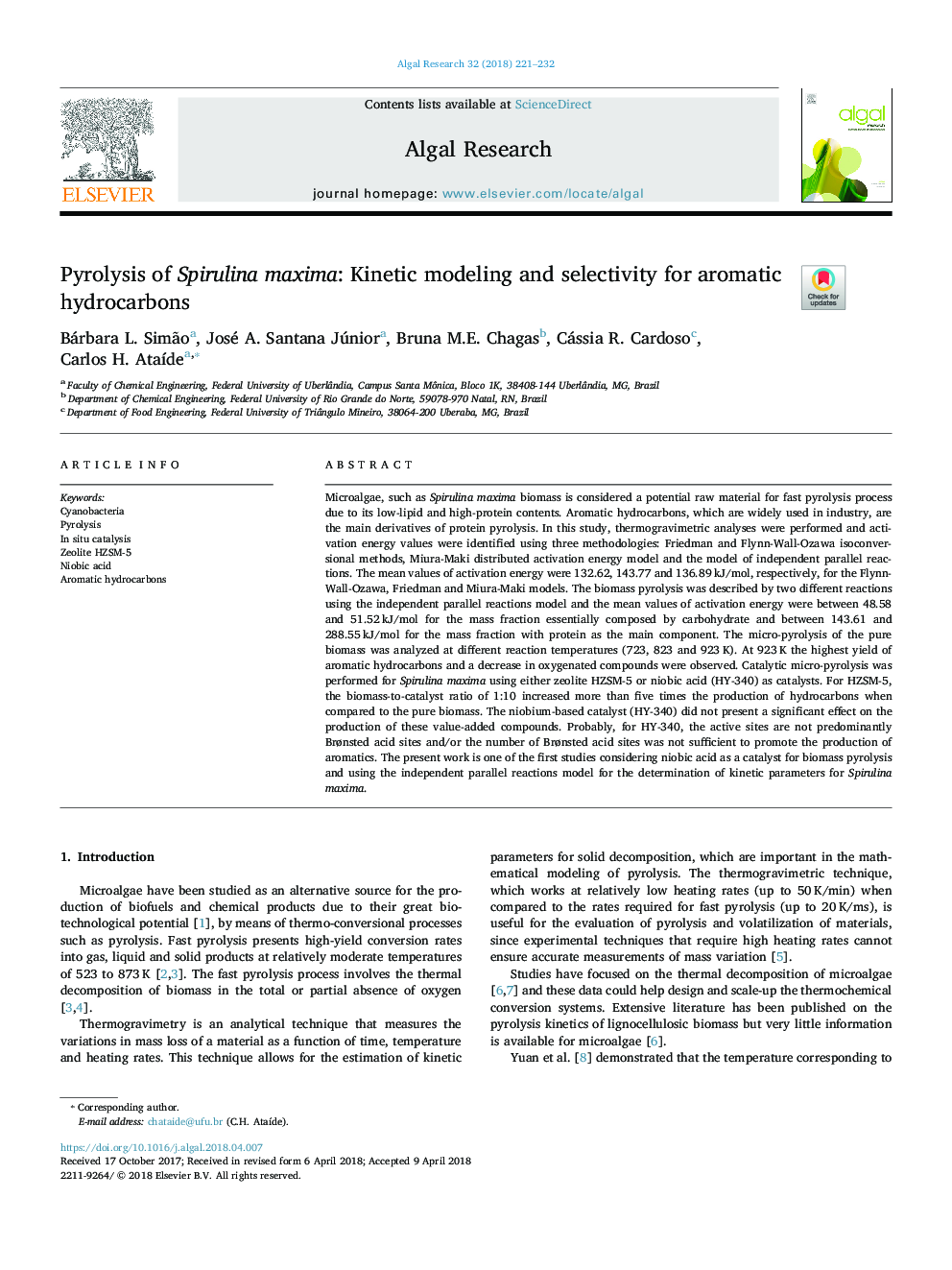| کد مقاله | کد نشریه | سال انتشار | مقاله انگلیسی | نسخه تمام متن |
|---|---|---|---|---|
| 8085847 | 1521801 | 2018 | 12 صفحه PDF | دانلود رایگان |
عنوان انگلیسی مقاله ISI
Pyrolysis of Spirulina maxima: Kinetic modeling and selectivity for aromatic hydrocarbons
دانلود مقاله + سفارش ترجمه
دانلود مقاله ISI انگلیسی
رایگان برای ایرانیان
کلمات کلیدی
موضوعات مرتبط
مهندسی و علوم پایه
مهندسی انرژی
انرژی های تجدید پذیر، توسعه پایدار و محیط زیست
پیش نمایش صفحه اول مقاله

چکیده انگلیسی
Microalgae, such as Spirulina maxima biomass is considered a potential raw material for fast pyrolysis process due to its low-lipid and high-protein contents. Aromatic hydrocarbons, which are widely used in industry, are the main derivatives of protein pyrolysis. In this study, thermogravimetric analyses were performed and activation energy values were identified using three methodologies: Friedman and Flynn-Wall-Ozawa isoconversional methods, Miura-Maki distributed activation energy model and the model of independent parallel reactions. The mean values of activation energy were 132.62, 143.77 and 136.89â¯kJ/mol, respectively, for the Flynn-Wall-Ozawa, Friedman and Miura-Maki models. The biomass pyrolysis was described by two different reactions using the independent parallel reactions model and the mean values of activation energy were between 48.58 and 51.52â¯kJ/mol for the mass fraction essentially composed by carbohydrate and between 143.61 and 288.55â¯kJ/mol for the mass fraction with protein as the main component. The micro-pyrolysis of the pure biomass was analyzed at different reaction temperatures (723, 823 and 923â¯K). At 923â¯K the highest yield of aromatic hydrocarbons and a decrease in oxygenated compounds were observed. Catalytic micro-pyrolysis was performed for Spirulina maxima using either zeolite HZSM-5 or niobic acid (HY-340) as catalysts. For HZSM-5, the biomass-to-catalyst ratio of 1:10 increased more than five times the production of hydrocarbons when compared to the pure biomass. The niobium-based catalyst (HY-340) did not present a significant effect on the production of these value-added compounds. Probably, for HY-340, the active sites are not predominantly Brønsted acid sites and/or the number of Brønsted acid sites was not sufficient to promote the production of aromatics. The present work is one of the first studies considering niobic acid as a catalyst for biomass pyrolysis and using the independent parallel reactions model for the determination of kinetic parameters for Spirulina maxima.
ناشر
Database: Elsevier - ScienceDirect (ساینس دایرکت)
Journal: Algal Research - Volume 32, June 2018, Pages 221-232
Journal: Algal Research - Volume 32, June 2018, Pages 221-232
نویسندگان
Bárbara L. Simão, José A. Santana Júnior, Bruna M.E. Chagas, Cássia R. Cardoso, Carlos H. AtaÃde,